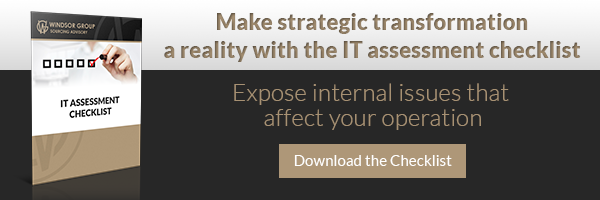
Many IT leaders will probably admit that they’re spending too much on the day-to-day operational functions, like preventing existing systems from breaking down with ongoing maintenance and replacing or expanding capacity - essentially keeping the lights on, so to speak.
And while no CIO wants to spend a big chunk of his or her budget on just simply keeping the lights on, the alternative of letting the lights go off just isn’t an option. If your IT infrastructure and systems are down, no customer will care about how innovative you are.
Collect, Analyze, Select
In order to tip the scales to a more balanced approach between IT maintenance and innovation, you’ll need to collect every piece of readily-available data used to run your IT environment. To analyze the data, use a dashboard to represent your data and look for opportunities to reduce cost and improve service. The data never lies - once you’ve identified some key opportunities to reduce cost but maintain service, consider working with an IT management consultant to evaluate the marketplace and find the right IT solutions vendor.
Solutions to Help You Balance the Scales
For many companies, managed services like storage and operating system engineering, architecture, build, maintenance, monitoring, and problem resolution can have a positive impact on the budget.
With other options like dedicated resource models (DRM), you can actually reduce your employee payroll budget while still utilizing a full-time resource. With less overhead tied up, you can redirect those funds to new IT business projects. Cloud computing, whether it’s a platform, infrastructure, or software as a service, relieves the operational funds so that you can focus on keeping pace with the demands of your business.
Shifting the Mindset
Standardization has great efficiencies but can sometimes be a hard sell to the rest of the organization since you lose the customization aspect of your technology - which means your employees will ultimately have to change the way they work. But with a little bit of planning and discipline, making the transition can translate into valuable IT dollars for new initiatives.
One thing that keeps IT operational costs so high is unexpected repairs - maintaining the life of your information technology requires preparation and planning as well. Making upgrades to your monitoring systems can help you be proactive and avoid applications going down without notice or running out of storage space.
Any business change requires communication company-wide to get everyone on board and get a good grasp of the priorities. Ultimately, you want to have a balanced budget so you can keep the lights on while also continuously bringing on new IT projects to grow the business. In order to do that, everyone needs to know how they can help.


